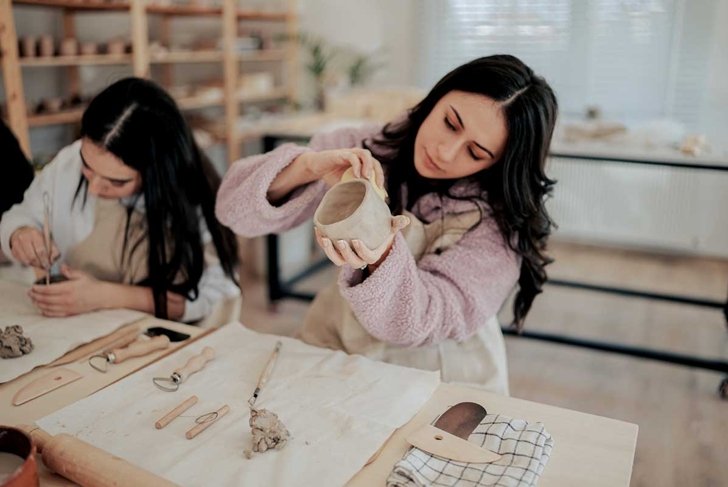What does it encompass?
Regenerative medicine focuses on the development and application of techniques to restore, regenerate, or replace cells, organs, or tissues affected by illness, injury, defects, or the aging process. This method goes beyond merely managing symptoms by empowering the body to recuperate or regain its normal functionality.
Types of regenerative medicine
Stem cell therapies
Stem cell therapies are currently utilized for a range of conditions, including cancer and blood disorders. Given the proper conditions, stem cells have the ability to divide and produce more cells, known as daughter cells, which can either become new stem cells or differentiate into specialized cells such as blood, neuron, heart muscle, or bone cells. This process can happen naturally within the body or in laboratory settings. The unique characteristic of stem cells is their capacity to generate new types of cells.
Platelet-rich plasma (PRP) injections
PRP injections leverage a person’s own blood to aid in healing wounds, treating joint or tendon injuries, and combating male pattern baldness. Platelet-rich plasma contains plasma—the liquid part of blood—and platelets that can promote cell reproduction and tissue regeneration or healing. To produce PRP, an individual’s blood is spun rapidly in a centrifuge, which separates the components from the platelets to concentrate them within the plasma. This concentrated mixture is then injected into targeted areas such as damaged tendons or scalp regions requiring enhanced hair growth.
Prolotherapy
Prolotherapy involves injecting a sugar or saline solution into ligaments, and sometimes into muscles and tendons, to encourage the healing process by stimulating the growth of new cells. It is believed that this approach signals the body to send immune cells to the injection site, which aids in repairing damaged soft tissues and alleviating pain.
Cartilage regeneration
Though not a standalone treatment, techniques like tissue engineering, stem cell therapy, and PRP therapy are being studied for their potential in regenerating cartilage—particularly relevant in treating sports injuries and osteoarthritis. It is hypothesized that injecting healthy cells into affected areas (commonly the knee) may foster the regeneration of cartilage.
Great expectations for regenerative medicine
Regenerative medicine is also being explored for its efficacy in treating diabetes, repairing brain tissue injuries, and enhancing immune function. Research is ongoing into regenerating entire organs.
“We hold great aspirations,” says Fabio Rossi, scientific director of the BC Regenerative Medicine Network. “Bone marrow transplants, which regenerate the blood system using stem cells, have been practiced for around 30 years, but numerous revolutionary regenerative techniques are poised to emerge within the next decade.”
Rossi cites research from the UBC Faculty of Medicine and Vancouver Coastal Health, backed by Canada’s Stem Cell Network, investigating the world’s first genetically modified cell replacement therapies for diabetes. This innovative treatment incorporates a small implant containing millions of pancreatic cells derived from genetically engineered stem cells, potentially enabling diabetes patients to produce insulin.
“It is advancing toward the possibility of replacing cell types that are currently irreplaceable,” Rossi explains. For instance, administering healthy heart cells into the heart muscle of a patient with heart disease may help in repairing that muscle. “Many well-funded companies are diligently working to make this a clinical reality, and it shows considerable promise,” he adds.
Is it considered “natural”?
The body naturally regenerates in various ways through molecular, cellular, and tissue processes. Humans can regrow hair and skin, and wounds heal. When a bone fractures, new tissue helps rejoin the broken pieces. Additionally, if a portion of the liver is lost or damaged, the remaining tissue can grow back to its original size, thus restoring organ function.
However, whether regenerative medicine qualifies as “natural” is a matter for debate. Although this field builds on the body’s inherent self-healing capabilities to restore, maintain, or enhance human functionality, it requires certain medical interventions. “You are employing cells that are manipulated in ways that are not natural,” Rossi notes.
Ethical issues
Embryonic stem cells are derived from early embryos created during in-vitro fertilization treatments that were not implanted. These cells are donated with informed patient consent and can grow in specialized laboratory solutions. This source is contentious due to differing beliefs regarding the beginning of human life. Adult stem cells are often considered less versatile compared to embryonic stem cells.
Accessibility
Regenerative medicine is becoming more accessible as it progresses.
Individuals with male pattern baldness can readily obtain PRP injections. Numerous clinics across Canada and the US offer regenerative medicine services aimed at treating conditions like arthritis, joint pain, muscle tears, and tendon injuries. Treatment facilities worldwide claim to provide regenerative medicine for various conditions, including autism, lupus, and ALS.
Nevertheless, Rossi advises caution. The field is still in its infancy, and comprehensive clinical trials to substantiate many claims are scarce.
“PRP is being touted for numerous uses,” he remarks. “While there may be beneficial effects, I am skeptical about its ability to be a panacea. Much of the marketing that promises extraordinary results is not truthful.”
Regenerative medicine and cognitive aging
As people age, their cells continue to regenerate, but this ability diminishes over time, especially in the brain. Some studies suggest that a type of stem cell in the brain, known as “quiescent,” may be rejuvenated. This research holds great potential for individuals experiencing brain injuries or neurodegenerative conditions. Dormant stem cells in these patients might be activated to facilitate repair.
Sustaining a healthy pool of stem cells in the brain throughout aging could be vital in enhancing overall brain health and decreasing the risk of neurodegenerative diseases and cancers. Neural stem cells located in the hypothalamus have shown the capacity to reverse aging. Replenishing these neural stem cells may support healthier aging processes. Substances like Vitamin D, resveratrol, and curcumin have demonstrated potential benefits in stimulating the proliferation of neural stem cells.
What does the future hold?
Extensive research is currently underway across numerous areas that regenerative medicine may address.
Areas of research Examples for treatment
– genetic disorders using genetically modified stem cells for Fabry disease
– blood aiding in recovery from radiation and chemotherapy
– joints using stem cells for knee osteoarthritis
– burns applying stem cells to enhance wound healing
– critical care utilizing stem cells for septic shock treatment
Other areas of research within regenerative medicine include conditions such as Parkinson’s disease, multiple sclerosis, and muscular dystrophy.
Boosting stem cells
Research indicates that stem cells thrive in conducive environments. Enhancing stem cell proliferation can be viewed as a preventative health measure.
Physical activity – Aerobic exercise seems to promote stem cells’ transformation into bone rather than fat, and physical activity has been found to stimulate stem cells.
Reducing sugar intake – Lowering sugar consumption enables stem cells to utilize energy more efficiently.
Minimizing alcohol consumption – Extended alcohol use can hinder stem cell functions. Chronic binges negatively affect stem cell proliferation due to the impact of ethanol.
Considering intermittent fasting – Studies suggest that caloric restriction leads to an increase in stem cell numbers in the blood.
Remarkable potential of regenerative medicine
A key ambition of regenerative medicine is the capability to create new body parts using a patient’s own cells and tissues. This advancement could significantly lessen the global demand for organ transplants and minimize complications associated with organ rejection.





